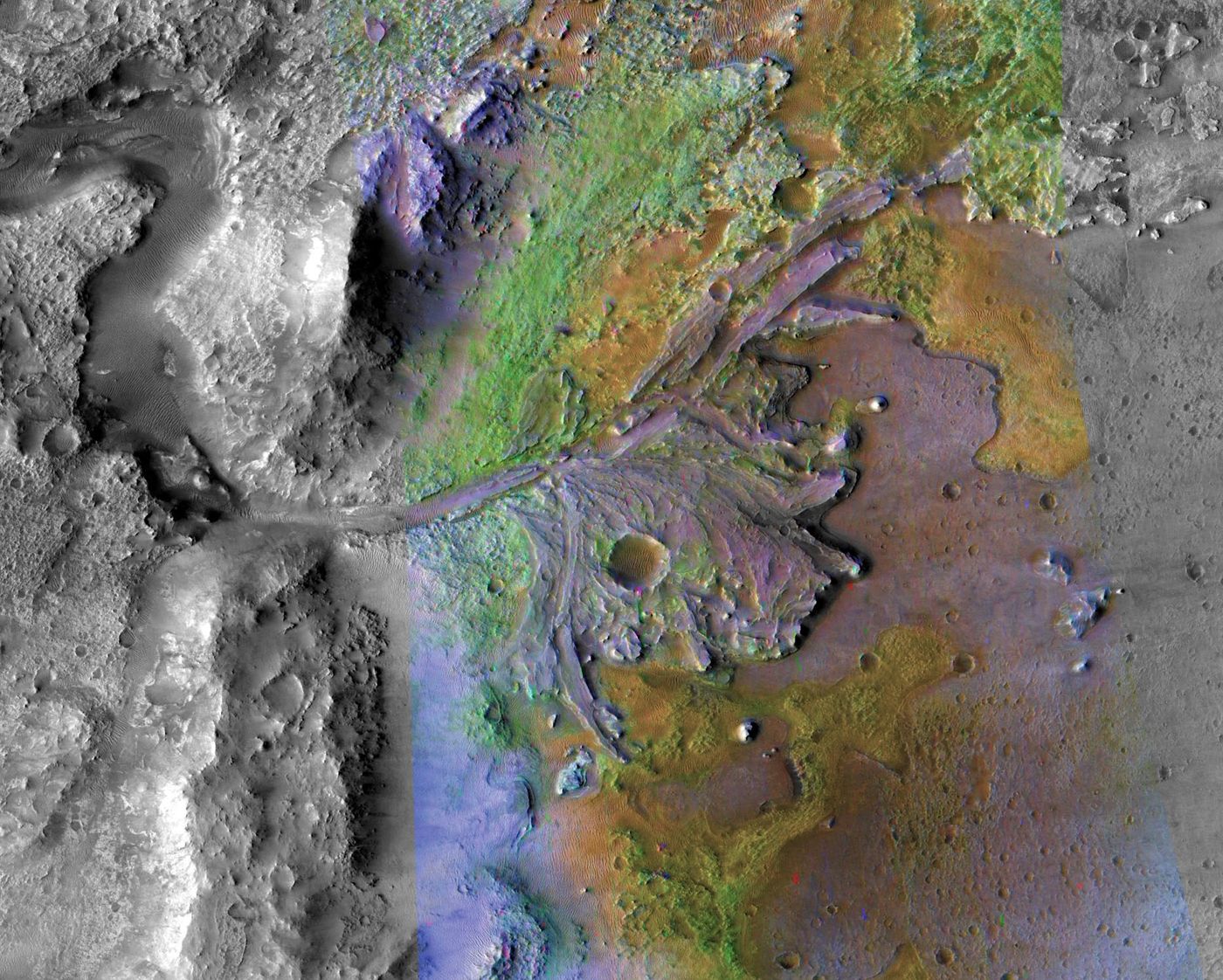NASA Reveals the Landing Site for Upcoming Mars 2020 Rover
Planetary scientists with NASA have spent the better part of five years analyzing the Martian surface and trying to decide where the best landing place for the upcoming Mars 2020 rover would be. Fortunately, it appears that the American space agency has officially made up its mind.
In a public statement released by NASA Monday afternoon, we learn that planetary scientists have selected Mars’ Jezero Crater to be the official landing site for the Mars 2020 rover.
Image Credit: NASA/JPL/JHUAPL/MSSS/Brown University
Despite the plethora of other places NASA could have chosen to land the Mars 2020 rover, the Jezero Crater was particularly unique. Not only do planetary scientists think it once hosted a 1,600-foot deep liquid water lake between 3.5 and 3.9 billion years ago, but a bevy of rivers are believed to have branched from it.
Citing the talented folks at NASA, environments like this are the ideal place to search for evidence of past life on Mars. If the theories about lost waterways are accurate, then it’s entirely plausible that they once supported life and those remnants could still be preserved there.
"The delta is a good place for evidence of life to be deposited and then preserved for the billions of years that have elapsed since this lake was present," explained Ken Farley, the project scientist for the Mars 2020 mission at NASA’s Jet Propulsion Laboratory.
Related: Behind the scenes of building the Mars 2020 rover
Mars 2020 will land in the same way that the Curiosity rover did in 2012, but landing in Jezero Crater will be challenging. Its deltas are littered with jagged boulders and sand traps that could cause trouble for the Mars 2020 rover if it doesn’t land in just the right spot.
The rover will avoid these treacherous obstacles while following an automated path along the delta. It will collect various samples along the way, some of which will be tested in-house for traces of life and others that will be preserved so that they can be retrieved and sent back to Earth for analysis in the future.
Planetary scientists are particularly excited about this mission because it promises to tell us more about Earth-like planets in our solar system and how they formed. Learning this key information could teach us more about how the Earth came to be and why the Earth is so habitable today.
"Mars is one of four terrestrial planets in the solar system, and it actually has the best record of what was going on in the first billion years of planetary formation," said Michael Meyer, the lead scientist of NASA's Mars Exploration Program. "During the same time that life started on Earth, life could have started on Mars."
"Mars had conditions more similar to Earth early on—in the first billion years—so what may have been happening in our solar system that allowed life to start on this planet may also be evident on Mars itself," Meyer added. "Because there are so many ancient rocks on the surface of Mars, this information is more accessible."
Related: NASA's Mars 2020 rover will sport 20/20 vision
NASA’s Mars 2020 rover is scheduled to launch in July of 2020, but it won’t reach the red planet until February 2021. Some of the most advanced systems available today comprise the Mars 2020 rover, and so it's no surprise that expectations are as high as they are.
It should be interesting to see what NASA will learn from Mars 2020, and more importantly, what it might find that its predecessors missed. Only time will tell…









